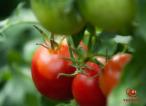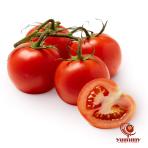Purchase and today price of easy tomato paste
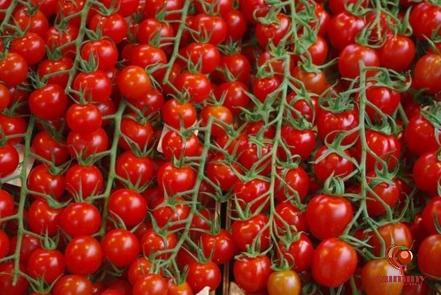
Tomato paste is a rich and flavorful ingredient that can elevate the taste of any dish. Whether you’re making a hearty pasta sauce, a tangy marinade, or a savory soup, tomato paste adds depth and complexity to your recipes. While store-bought tomato paste is convenient, making your own at home can be a rewarding and cost-effective alternative. In this comprehensive guide, we’ll explore the ins and outs of making easy tomato paste from scratch. From selecting the best tomatoes to storing the finished product, we’ve got you covered. The Basics of Tomato Paste: Tomato paste is a concentrated form of tomatoes that has been cooked down to remove excess moisture, resulting in a thick and intense paste. It serves as a flavor-packed base for countless recipes, adding a vibrant red color and a sweet-tart taste. Tomatoes are a rich source of vitamins, minerals, and antioxidants, making tomato paste not only delicious but also nutritious.

.
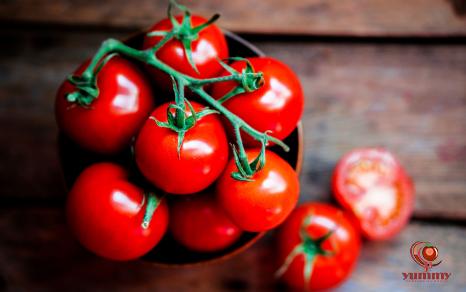 Choosing the Right Tomatoes: When it comes to making tomato paste, the type of tomatoes you use can make a significant difference in the flavor and consistency of the final product. Roma tomatoes, also known as plum tomatoes, are often preferred for making tomato paste due to their low moisture content and rich flavor. However, other varieties such as San Marzano or Amish Paste tomatoes can also work well. Preparing the Tomatoes: Before you can turn your tomatoes into paste, they need to be prepared properly. Start by washing the tomatoes thoroughly to remove any dirt or residue. If desired, you can also peel the tomatoes by blanching them in boiling water for a few seconds and then transferring them to an ice water bath. This will make it easier to blend the tomatoes into a smooth paste later on. Cooking the Tomatoes: To make tomato paste, the tomatoes need to be cooked down to reduce their moisture content and concentrate their flavor. Start by chopping the tomatoes into small pieces and removing the seeds. Then, place the tomatoes in a large pot or saucepan and cook them over low heat, stirring occasionally to prevent burning.
Choosing the Right Tomatoes: When it comes to making tomato paste, the type of tomatoes you use can make a significant difference in the flavor and consistency of the final product. Roma tomatoes, also known as plum tomatoes, are often preferred for making tomato paste due to their low moisture content and rich flavor. However, other varieties such as San Marzano or Amish Paste tomatoes can also work well. Preparing the Tomatoes: Before you can turn your tomatoes into paste, they need to be prepared properly. Start by washing the tomatoes thoroughly to remove any dirt or residue. If desired, you can also peel the tomatoes by blanching them in boiling water for a few seconds and then transferring them to an ice water bath. This will make it easier to blend the tomatoes into a smooth paste later on. Cooking the Tomatoes: To make tomato paste, the tomatoes need to be cooked down to reduce their moisture content and concentrate their flavor. Start by chopping the tomatoes into small pieces and removing the seeds. Then, place the tomatoes in a large pot or saucepan and cook them over low heat, stirring occasionally to prevent burning.
..
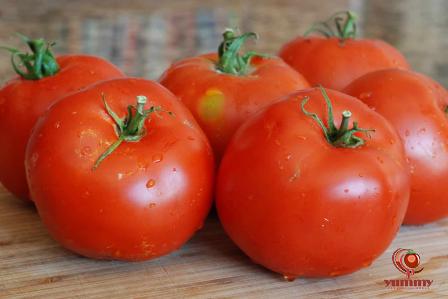 As the tomatoes cook, they will break down and release their juices, creating a thick and chunky mixture. Blending the Mixture: Once the tomatoes have cooked down and softened, it’s time to turn them into a smooth paste. Using an immersion blender, food processor, or blender, puree the cooked tomatoes until they reach a smooth and uniform consistency. If you prefer a chunky texture, you can leave some pieces of tomatoes intact. For a silky smooth paste, continue blending until the desired consistency is achieved. Seasoning and Flavoring: Tomato paste is often seasoned with a variety of herbs and spices to enhance its flavor profile. Common additions include garlic, onion, basil, oregano, and red pepper flakes. You can also add a pinch of sugar to balance out the acidity of the tomatoes. Experiment with different seasonings to create a tomato paste that suits your taste preferences. Storing Tomato Paste: Once you’ve made a batch of tomato paste, you’ll want to store it properly to preserve its freshness and flavor. Transfer the paste to a clean glass jar or airtight container and refrigerate it for up to a week. For longer storage, you can freeze the paste in an ice cube tray and then transfer the frozen cubes to a freezer-safe bag. Frozen tomato paste can last for several months and be conveniently portioned out as needed. Using Tomato Paste in Recipes: Tomato paste is a versatile ingredient that can be used in a wide range of dishes. It serves as a flavorful base for pasta sauces, soups, stews, and braises. You can also add a spoonful of tomato paste to marinades, dressings, and dips for an extra burst of flavor. By incorporating homemade tomato paste into your recipes, you can elevate the taste and quality of your culinary creations. Recipes Featuring Tomato Paste: 1. Homemade Marinara Sauce: In a saucepan, combine tomato paste, crushed tomatoes, garlic, onion, olive oil, and Italian seasoning. Simmer the sauce for 15-20 minutes and serve over cooked pasta or as a dipping sauce for garlic bread. 2. Slow-cooked Beef Stew: Add tomato paste, beef broth, diced vegetables, and seared beef cubes to a slow cooker.
As the tomatoes cook, they will break down and release their juices, creating a thick and chunky mixture. Blending the Mixture: Once the tomatoes have cooked down and softened, it’s time to turn them into a smooth paste. Using an immersion blender, food processor, or blender, puree the cooked tomatoes until they reach a smooth and uniform consistency. If you prefer a chunky texture, you can leave some pieces of tomatoes intact. For a silky smooth paste, continue blending until the desired consistency is achieved. Seasoning and Flavoring: Tomato paste is often seasoned with a variety of herbs and spices to enhance its flavor profile. Common additions include garlic, onion, basil, oregano, and red pepper flakes. You can also add a pinch of sugar to balance out the acidity of the tomatoes. Experiment with different seasonings to create a tomato paste that suits your taste preferences. Storing Tomato Paste: Once you’ve made a batch of tomato paste, you’ll want to store it properly to preserve its freshness and flavor. Transfer the paste to a clean glass jar or airtight container and refrigerate it for up to a week. For longer storage, you can freeze the paste in an ice cube tray and then transfer the frozen cubes to a freezer-safe bag. Frozen tomato paste can last for several months and be conveniently portioned out as needed. Using Tomato Paste in Recipes: Tomato paste is a versatile ingredient that can be used in a wide range of dishes. It serves as a flavorful base for pasta sauces, soups, stews, and braises. You can also add a spoonful of tomato paste to marinades, dressings, and dips for an extra burst of flavor. By incorporating homemade tomato paste into your recipes, you can elevate the taste and quality of your culinary creations. Recipes Featuring Tomato Paste: 1. Homemade Marinara Sauce: In a saucepan, combine tomato paste, crushed tomatoes, garlic, onion, olive oil, and Italian seasoning. Simmer the sauce for 15-20 minutes and serve over cooked pasta or as a dipping sauce for garlic bread. 2. Slow-cooked Beef Stew: Add tomato paste, beef broth, diced vegetables, and seared beef cubes to a slow cooker.
…
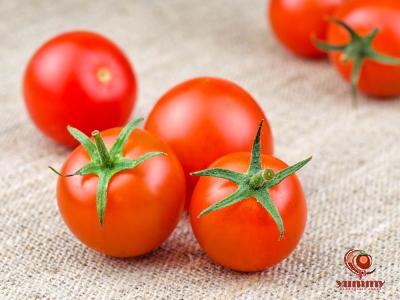 Cook on low for 6-8 hours until the meat is tender and the flavors are fully developed. 3. Spicy Chickpea Curry: Saute onions, garlic, and ginger in a skillet, then add tomato paste, coconut milk, chickpeas, and spices. Simmer until the curry is thick and fragrant, then serve over rice or with naan bread. Conclusion: Making easy tomato paste at home is a simple and rewarding process that allows you to customize the flavor and quality of this essential ingredient. By following the steps outlined in this guide, you can create homemade tomato paste that is rich, flavorful, and free from preservatives. Experiment with different tomato varieties, seasonings, and recipes to discover new ways to enjoy tomato paste in your cooking. With a jar of homemade tomato paste in your fridge or freezer, you’ll always be prepared to add a burst of tomato goodness to your favorite dishes. 4. Tomato and Basil Bruschetta: Combine diced tomatoes, minced garlic, basil, olive oil, balsamic vinegar, and a spoonful of tomato paste. Spread the mixture on toasted baguette slices for a delicious appetizer or snack. 5. Vegan Lentil Bolognese: In a skillet, sauté onions, carrots, and celery until tender. Add cooked lentils, diced tomatoes, tomato paste, and Italian herbs. Simmer until the sauce thickens and serve over spaghetti or zucchini noodles. 6. Shakshuka: Make a flavorful base by cooking onions, bell peppers, and garlic with tomato paste and spices. Create wells in the sauce and crack eggs into them, then bake until the eggs are set. Serve with crusty bread for a satisfying brunch or dinner. Tips for Making the Best Tomato Paste: 1. Choose ripe, flavorful tomatoes for the best-tasting tomato paste. If you can’t find fresh, ripe tomatoes, canned tomatoes can also be used to make tomato paste. 2. To enhance the flavor of your tomato paste, roast the tomatoes in the oven before cooking them down on the stovetop. This will add a deep, caramelized richness to the final product. 3. Adding a splash of red wine or balsamic vinegar to your tomato paste can enhance its complexity and depth of flavor. Experiment with different acidic ingredients to find the perfect balance for your taste buds. 4. Store-bought tomato paste often contains added sugars and preservatives. By making your own tomato paste at home, you can control the ingredients and create a healthier alternative for your recipes. 5. To save time and effort, consider making a large batch of tomato paste and portioning it out for future use. Freeze individual servings in ice cube trays or small containers for easy access whenever you need a spoonful of tomato goodness.
Cook on low for 6-8 hours until the meat is tender and the flavors are fully developed. 3. Spicy Chickpea Curry: Saute onions, garlic, and ginger in a skillet, then add tomato paste, coconut milk, chickpeas, and spices. Simmer until the curry is thick and fragrant, then serve over rice or with naan bread. Conclusion: Making easy tomato paste at home is a simple and rewarding process that allows you to customize the flavor and quality of this essential ingredient. By following the steps outlined in this guide, you can create homemade tomato paste that is rich, flavorful, and free from preservatives. Experiment with different tomato varieties, seasonings, and recipes to discover new ways to enjoy tomato paste in your cooking. With a jar of homemade tomato paste in your fridge or freezer, you’ll always be prepared to add a burst of tomato goodness to your favorite dishes. 4. Tomato and Basil Bruschetta: Combine diced tomatoes, minced garlic, basil, olive oil, balsamic vinegar, and a spoonful of tomato paste. Spread the mixture on toasted baguette slices for a delicious appetizer or snack. 5. Vegan Lentil Bolognese: In a skillet, sauté onions, carrots, and celery until tender. Add cooked lentils, diced tomatoes, tomato paste, and Italian herbs. Simmer until the sauce thickens and serve over spaghetti or zucchini noodles. 6. Shakshuka: Make a flavorful base by cooking onions, bell peppers, and garlic with tomato paste and spices. Create wells in the sauce and crack eggs into them, then bake until the eggs are set. Serve with crusty bread for a satisfying brunch or dinner. Tips for Making the Best Tomato Paste: 1. Choose ripe, flavorful tomatoes for the best-tasting tomato paste. If you can’t find fresh, ripe tomatoes, canned tomatoes can also be used to make tomato paste. 2. To enhance the flavor of your tomato paste, roast the tomatoes in the oven before cooking them down on the stovetop. This will add a deep, caramelized richness to the final product. 3. Adding a splash of red wine or balsamic vinegar to your tomato paste can enhance its complexity and depth of flavor. Experiment with different acidic ingredients to find the perfect balance for your taste buds. 4. Store-bought tomato paste often contains added sugars and preservatives. By making your own tomato paste at home, you can control the ingredients and create a healthier alternative for your recipes. 5. To save time and effort, consider making a large batch of tomato paste and portioning it out for future use. Freeze individual servings in ice cube trays or small containers for easy access whenever you need a spoonful of tomato goodness.


 Phone number:
Phone number:  WhatsApp Response:
WhatsApp Response:





